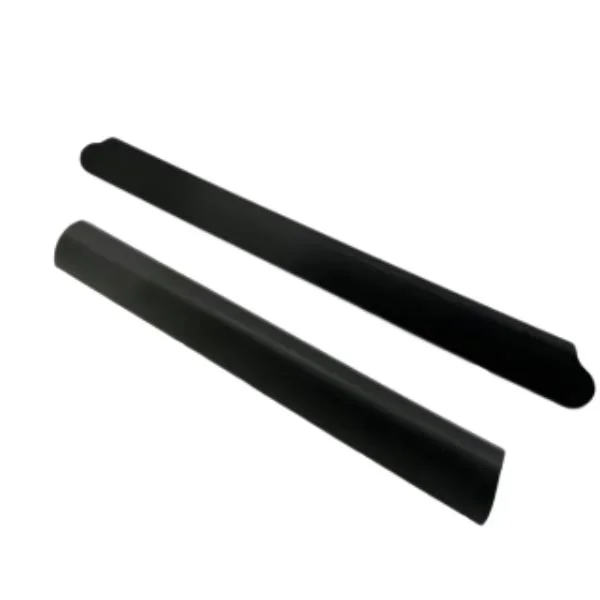LED displays have become increasingly popular in various industries, from advertising and entertainment to transportation and sports. These displays offer vibrant visuals and dynamic content, captivating audiences worldwide. However, to ensure their longevity and protect them from potential damage, LED display protective strips have emerged as a crucial component. This article explores the significance of LED display protective strips, their benefits, and the various industries that can benefit from their implementation.
What are LED Display Protective Strips?
LED display protective strips are specialized components designed to safeguard LED displays from external factors that may cause damage. These strips are typically made from durable materials such as rubber or silicone and are installed around the edges of the LED display panel. They act as a protective barrier, shielding the display from impacts, moisture, dust, and other potential hazards.

The Role of LED Display Protective Strips
Impact Protection:
LED displays are often installed in high-traffic areas, making them susceptible to accidental collisions or impacts. LED display protective strips absorb the force of such impacts, minimizing the risk of damage to the display panel. By acting as a cushion, these strips help maintain the structural integrity of the LED display, ensuring its long-term durability.
Moisture and Dust Resistance:
LED display protective strips create a seal around the edges of the display panel, preventing moisture and dust from infiltrating the internal components. Moisture can cause short circuits and corrosion, while dust particles can obstruct the LED pixels, affecting the overall image quality. By keeping these elements at bay, LED display protective strips contribute to the display's longevity and performance.
Thermal Management:
LED displays generate heat during operation, and excessive heat can lead to performance issues and reduced lifespan. LED display protective strips often incorporate thermal management features, such as heat sinks or ventilation channels, to dissipate heat effectively. By maintaining optimal operating temperatures, these strips help prolong the lifespan of the LED display.
Types of LED Display Protective Strips
Rubber Protective Strips:
Rubber protective strips are commonly used in outdoor LED displays due to their excellent weather resistance and durability. They provide a strong barrier against impacts and environmental factors, ensuring the display remains protected in various weather conditions.
Silicone Protective Strips:
Silicone protective strips offer similar protective properties to rubber strips but with added flexibility. This flexibility allows for easier installation and removal, making silicone strips ideal for applications where frequent maintenance or replacement is required.
Magnetic Protective Strips:
Magnetic protective strips are designed for easy installation and removal. They utilize magnets to attach to the edges of the LED display panel, providing a secure and protective seal. These strips are particularly useful in applications where frequent display panel access is necessary, such as in retail environments or exhibition displays.

Benefits of LED Display Protective Strips
Increased Durability:
LED display protective strips significantly enhance the durability of LED displays by absorbing impacts and protecting against environmental factors. This increased durability translates to a longer lifespan for the display, reducing the need for frequent replacements and saving costs in the long run.
Improved Image Quality:
By preventing dust and moisture from entering the display panel, LED display protective strips help maintain the image quality of the LED display. Dust particles can obstruct the LED pixels, leading to reduced brightness and clarity. Additionally, moisture can cause corrosion and damage to the internal components, affecting the overall performance of the display.
Versatility:
LED display protective strips are available in various sizes and designs, making them suitable for a wide range of LED display applications. Whether it's a large outdoor billboard or a small indoor display, there are protective strips available to fit different display sizes and requirements.
Installation and Maintenance of LED Display Protective Strips
Installing LED display protective strips is a relatively straightforward process. The strips are typically designed to be easily attached to the edges of the display panel using adhesive or magnetic attachments. It is important to ensure a secure and tight fit to maximize the protective benefits of the strips.
Regular maintenance is essential to ensure the continued effectiveness of LED display protective strips. This includes periodic cleaning to remove any dust or debris that may accumulate on the strips. Additionally, inspecting the strips for any signs of wear or damage and replacing them when necessary will help maintain the display's protection.
Conclusion
LED display protective strips play a crucial role in enhancing the durability and safety of LED displays. By providing impact protection, moisture and dust resistance, and thermal management, these strips contribute to the longevity and performance of LED displays. The benefits of LED display protective strips include increased durability, improved image quality, cost savings, and versatility. Implementing these protective strips in various industries, such as advertising, entertainment, transportation, and sports, ensures that LED displays can continue to captivate audiences while remaining protected from potential damage.







